The Science of Getting Started: Understanding Procrastination in the Neurodivergent Mind
The Narrative:
Think of your mind as a complex engine. Sometimes it purrs along smoothly, while other times it seems to stall just when you need it most. This “stalling” – what we commonly call procrastination – isn’t a character flaw. It’s a fascinating interaction between your brain’s motivation systems, emotional processing, and executive function networks. Traditional advice about “just getting started” or “using more willpower” often falls flat because it doesn’t address the neurological underpinnings of procrastination.
The Shift:
By understanding the brain science behind procrastination, we can transform our approach from judgment and frustration to curiosity and effective strategies. Let’s explore why procrastination happens and how to work with your brain’s natural patterns to overcome it.
Understanding Your Brain’s Control Centers
To understand procrastination, we first need to understand how the brain processes tasks and motivation. Imagine your brain has three key control centers, each playing a crucial role in task initiation and completion:
The Emotional Center (Limbic System):
-
- Anxiety about potential failure
- Overwhelm from task complexity
- Resistance to boring or unpleasant activities
The Decision-Making Hub (Prefrontal Cortex):
-
- Planning and organizing tasks
- Estimating time requirements
- Prioritizing activities
- Maintaining focus
The Motivation Circuit (Dopamine System):
-
- Releasing reward chemicals for task completion
- Managing interest and engagement
- Processing the perceived value of activities
For neurodivergent individuals, these systems often interact in unique ways, creating both challenges and opportunities in task management.
The Procrastination Cycle
Procrastination often follows a predictable pattern. Understanding this cycle is the first step to breaking it:
Phase 1: Task Awareness
-
- The task’s perceived difficulty
- Emotional associations with similar past experiences
- Potential consequences of completion or delay
Phase 2: Emotional Response
-
- Anxiety about performance
- Overwhelm from task size
- Resistance to potential discomfort
Phase 3: Avoidance
-
- Engaging in easier, more pleasurable activities
- Finding “productive” distractions
- Rationalizing the delay
Phase 4: Consequences
-
- Increased stress as deadlines approach
- Guilt about procrastinating
- Reduced confidence in ability to complete tasks
Breaking the Cycle: Working With Your Brain
Instead of fighting against your brain’s natural patterns, let’s explore strategies that work with them:
The Energy-Management Approach
Morning Energy Peak:
-
- Schedule challenging tasks during your highest energy hours
- Use this time for task initiation and complex thinking
- Create momentum for the rest of the day
Afternoon Dips:
-
- Plan simpler, more routine tasks
- Build in movement breaks
- Use social accountability
Evening Recovery:
-
- Review and prepare for tomorrow
- Celebrate daily progress
- Set up your environment for success
The Task-Processing Method
Transform overwhelming tasks into manageable actions:
1. Initial Assessment
-
- Write down the complete task
- Note immediate emotional responses
- Identify specific concerns or barriers
2. Strategic Breakdown
-
- Divide the task into 15-minute segments
- Create clear, concrete action steps
- Identify the smallest possible starting point
3. Environment Setup
-
- Prepare all necessary materials
- Remove potential distractions
- Create comfort in your workspace
4. Activation Ritual
-
- Develop a consistent starting routine
- Use physical cues (like setting a timer)
- Include a reward for task initiation
Solutions for Common Procrastination Triggers
When Tasks Feel Overwhelming: The Micro-Progress Technique
- Choose the smallest possible component of the task
- Set a timer for just 5 minutes
- Focus only on that tiny piece
- Celebrate the completion of each micro-step
Example: Instead of “Write the report,” start with:
-
- Open the document
- Write one bullet point
- Draft a single paragraph
- Add one reference
When Perfectionism Blocks Progress: The “Good Enough” Protocol
-
- Define minimum acceptable criteria
- Create a rapid first draft
- Set specific time limits for revisions
- Use external feedback for perspective
When Time Feels Abstract: The Time Anchoring Method
-
- Break tasks into 25-minute segments
- Use visual timers for concrete time awareness
- Create time boundaries with clear start/stop signals
- Build in buffer time for transitions
Success Stories in Procrastination Management
The Student Who Reclaimed Control
Maria struggled with starting assignments until she developed her “5-minute launch” routine:
- Setting up her study space
- Playing specific focus music
- Starting with just one problem
Result: Assignments completed days before deadlines instead of last-minute rushes
The Professional Who Found Flow
James transformed his work patterns by creating a structured start-of-day routine with visual planning, accountability, and micro-wins.
Result: Increased output, reduced anxiety, and more consistent productivity throughout the week.
Remember: Procrastination isn’t a flaw—it’s a signal. By understanding the brain’s patterns, we can use tailored strategies to unlock motivation, reduce overwhelm, and create meaningful progress on your terms.
Matching tasks to his energy levels:
- Complex analysis during morning peak hours
- Routine emails during afternoon dips
- Planning sessions in early evening
Result: Increased productivity and reduced stress about deadlines
Remember that procrastination isn’t a moral failing—it’s a complex interplay of brain systems that can be understood and redirected. By working with your brain’s natural patterns rather than against them, you can develop strategies that transform procrastination from a persistent challenge into an occasional hurdle.




